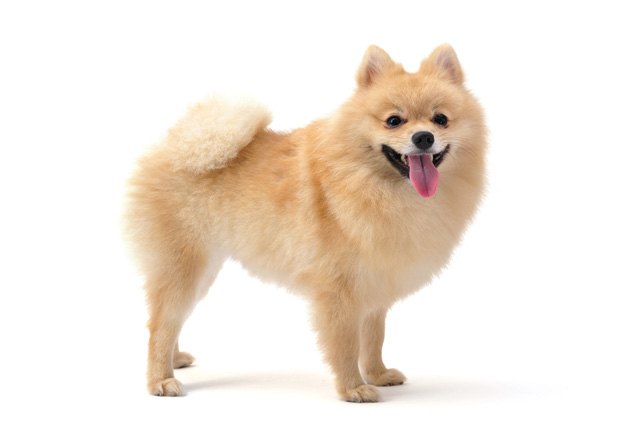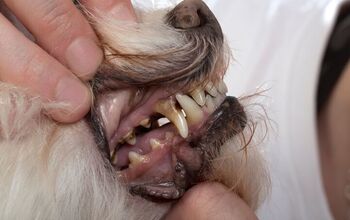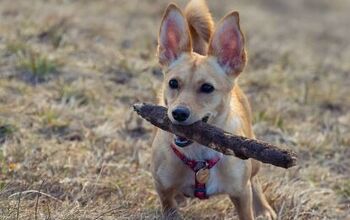Pomeranian


About Pomeranian
It’s hard to resist the sweet ball of fur known as the Pomeranian. Not only is this breed uber cute, the Pomeranian is a wonderful addition to the family, thanks to its docile temperament, intelligence and devotion. With a string of fantastic character traits, and its simply irresistible looks, the Pomeranian became the star of many a household. And just to prove you shouldn’t judge a book by its cover (no matter how cute it is), the Pomeranian makes an excellent watchdog – just don’t expect it will scare people off. Small, but with plenty of spirit, the Pomeranian will stand firmly by its loving family.
And although they may be small in size, the Pomeranians are quite sturdy when it comes to their appearance and bone structure. Often compared to small foxes due to the shape of its face, the Pomeranian sports a plumed tail that feathers over its back. Being so small yet strong, these dogs will have plenty of energy and will love to play and exercise daily.
A favorite among those who show dogs, Pomeranians’ easy going personalities make them a great forever companion as well. You can trust that your Pomeranian will be outgoing, easily trainable, and will love being the center of attention. And the looks will be simply impossible to resist. Read on to find out more about the Pomeranian.
The Pomeranian is a wonderful addition to the family, thanks to its docile temperament, intelligence and devotion.
The history of this attractive dog breed can be traced back to the Prussian region of Pomerania, where the Pomeranian breed gradually emerged from the ancient Spitz dogs that were originally used as sled dogs. The breed’s name originally came from the historical region of Pomerania (now present day Germany and Poland). Originally weighing nearly 30 pounds, the dog served as an able herder of sheep in its larger form. However, where the original Spitz was a true dog with a role, the much smaller Pomeranian really isn’t. These were bred to be small and thus cuter, and were basically bred as lap and show dogs. These dogs, which weighed in at a hefty four to five pounds, became an instant hit among the nobility of the day. Its natural skills at showmanship not only made them popular dogs for showing in competitions, but also popular in the circus for its outgoing and winning personalities as well as their agility and ability to learn fairly complicated tricks. Having an exotic pupper to proudly display in their arms was a hit with the nobles of the day – and easily displayed their wealth and aristocratic position. The Pomeranian spread all over Europe from that moment on.
There have been some rather famous owners of Pomeranians throughout history. Among them are Marie Antoinette, Mozart, Thomas Edison, and Michelangelo in addition to Queen Victoria who owned quite a few of these amazing little dogs. Queen Victoria’s pet was particularly small and tiny, and served as a staple for all other Pomeranian’s that followed. A true trend-setter, the Queen can be credited for launching the stellar “career” of this breed and increasing its popularity.
Pedigree
The Pomeranian was recognized by the AKC in 1888. That is the same year when Queen Victoria adopted her dear Pomeranian. In the following decades, the rise of this breed was always impressive, and Pomeranian became a balanced, rounded, and well-developed dog breed.
Pomeranians are known to be picky eaters, and since this breed needs to be fed dry dog food in order to prevent tooth loss, feeding them can be a problem. Try to stay away from table scraps – your Pomeranian will develop a taste for it and may ignore its dry food altogether. A balanced source of nutrients needs to be provided, even if it takes some trial and error before you discover your Pom’s favorite brand of kibble. An occasional meal of light meat and veggies can be helpful to, in order to maintain a healthy immune system. Of course, your vet can provide you with the best possible information in regards to the diet, and can recommend something especially for your Pomeranian. When in doubt, ask the vet.
A favorite among those who show dogs, Pomeranians’ easygoing personalities make them a great forever companion as well.
Pomeranians can be a handful at times – although they are intelligent, they can also be willful. Also, they can sometimes be a true spark around the house: when that extra energy kicks in, they can be all over the place, running and goofing off. To get things under control, it is good to start training them as soon as possible and to be consistent with it. Since the breed is smart, your dog can be taught some amazing tricks. Like most dogs, crate training your Pomeranian is important, as it needs a den of its own. An immense help during this process can be positive reinforcement and a dominant, strict attitude.
Both male and female Pomeranians can weigh anywhere from three to seven pounds. While this really isn’t much, it is directly in proportion with the breeds looks and height. And it also contributes to their high energy! And what’s best – they really feel light as a feather when you carry them around in your arms!
As we mentioned before, the Pomeranian is outgoing and intelligent. They will soak up all the attention they can get from your family. And because they are so small, they travel well, so your Pomeranian can make friends wherever it travels.
Because of its small size, which makes it more prone to injury, the Pomeranian is best suited for homes with older children. In addition, smaller children may get your Pomeranian overly excited. Households with older children are ideal, as Pomeranians will be more likely to be showered with the attention they desire. It’s also a good idea to get your kids involved with training – it’s a wonderful way to set boundaries and build strong bonds.
It may be a bit of a dog stereotype, but the small Pomeranians can be a bit yippy. But if you start training young, you can nip the yip in the bud!
The Pomeranian suffers from small dog syndrome, which means it doesn’t know it’s a small dog. That’s why it will pick a fight with a much bigger dog. And because the Pomeranian loves attention, ensure that it’s not left alone for long periods of time. As long as your Pomeranian gets the exercise it needs and lots of love, it will make an excellent pet.
You should be aware of a few health conditions that are fairly common with Pomeranians. One of the most frequent is early tooth loss. You can help prevent this by feeding your Pomeranian a healthy diet of dry dog food that helps condition its teeth and gums. You can also brush your Pomeranian’s teeth daily. Always check with the breeder in order to identify any potential problems in the parental lines of a Pomeranian and make sure your dog gets regular check-ups so issues can be identified early on.
Pomeranians have a life expectancy of 12 to 16 years. Easy to bond with and friendly, they are ideal as a companion pet.
The Pomeranian needs regular exercise though it is possible for them to get a fair amount by simply running around the house. We recommend taking them for a daily walk – besides, the Pomeranian will love the attention it gets along the way.
Because it is so small, this breed travels well, so your Pomeranian can make friends wherever it travels.
The American Kennel Club says this about the breed: “The Pomeranian is a cocky, animated companion with an extroverted personality. This compact little dog is an active toy breed with an alert character and fox-like expression.”
Pomeranians have a soft and fluffy undercoat and a long and straight overcoat. The Pomeranian’s coat comes in a variety of colors, so don’t be surprised to see a range of varieties.
The Pomeranian’s coat sheds constantly and it needs daily brushing in order to prevent tangling and matting. This grooming habit will help prevent dandruff as well. You should also clean its ears and eyes prevent potential problems and infections.
Your adorable Pomeranian puppy will need lots of attention and love, so do it right from the start. The first four to six months are important when it comes to forming your dog’s personality and responsiveness. Be consistent with house training and discipline, and stick to a routine – you’ll be rewarded with years of ease and pleasure.
Photo credit: antpkr/Shutterstock

Amy Tokic, Editor of PetGuide.com, is a passionate animal lover and proud pet parent of Oscar, a Shih Tzu/Chihuahua cross, and Zed, a Japanese Chin. Her love of animals began in kindergarten, when she brought her stuffed dog Snoopy into class with her every day. Now, she writes about her adventures in pet ownership and tirelessly researches products, news and health related issues she can share with other animal enthusiasts. In her free time, Amy loves perusing used book and record stores, obsessing over the latest pet products available and chasing squirrels with wild abandon (a habit attributed to spending too much time with her pooches).
More by Amy Tokic

























